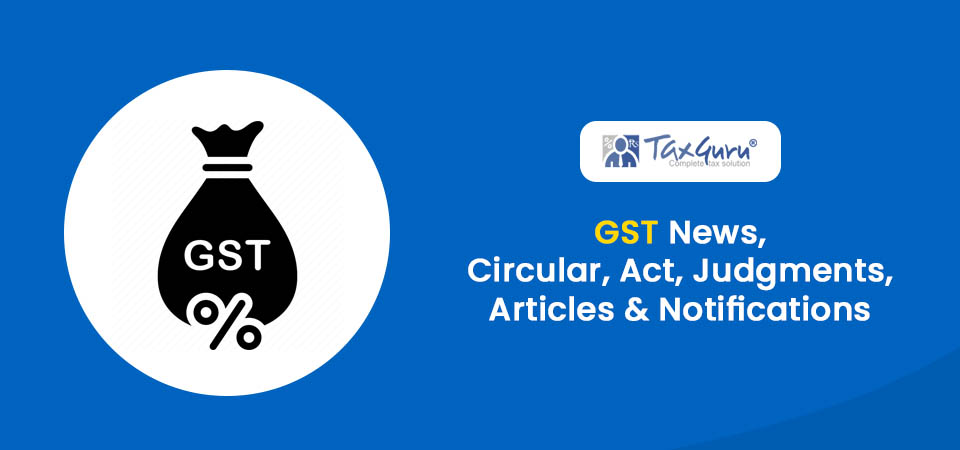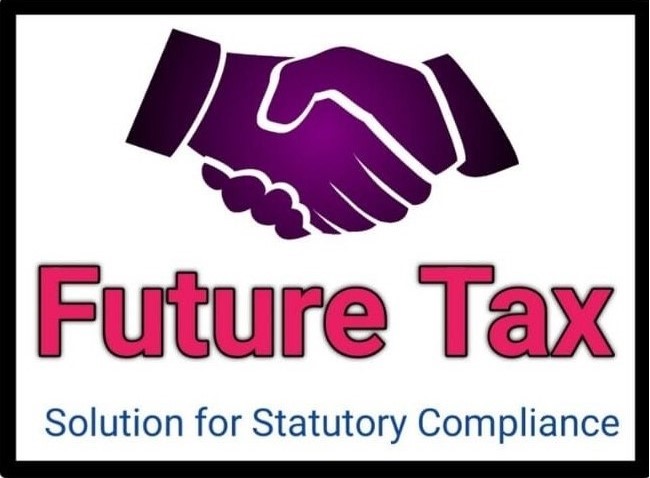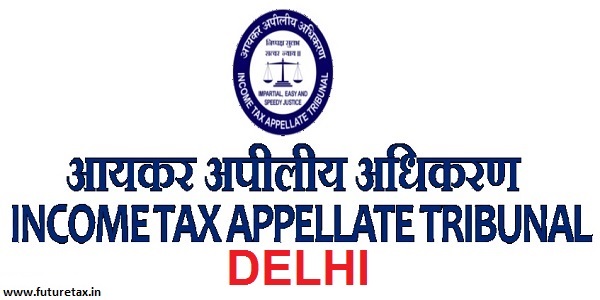
E-Invoice Glossary and Steps for GST Reporting in Tamil
- Tamil Tax upate News
- November 29, 2024
- No Comment
- 383
- 16 minutes read
The GST Network (GSTN) has released an e-Invoice glossary and a step-by-step guide to aid taxpayers in understanding the e-invoicing process. E-invoicing refers to the reporting of specified GST documents to a government-approved Invoice Registration Portal (IRP), where taxpayers obtain a unique Invoice Reference Number (IRN). The system allows businesses to continue creating invoices in their own Accounting/Billing/ERP systems and report them to one of six authorized IRPs, free of charge. Eligible taxpayers with an annual turnover exceeding ₹5 crore must comply with the e-invoicing regulations. The guide covers key terms such as IRP, AATO (Annual Aggregate Turnover), and the reporting process, which includes enabling e-invoicing, registering on an IRP, reporting invoices, and receiving an IRN and QR code. Taxpayers can verify their invoices using the GSTN e-Invoice app or IRN search functionality on the portal. The system also auto-populates e-invoice data into the GSTR-1 return. A dedicated e-Invoice master portal is available for taxpayers to access all necessary information, including IRP links, schema, and master codes. The advisory provides a comprehensive resource for businesses to comply with e-invoice reporting requirements and streamline their GST processes.
Goods and Services Tax
Government of India, States and Union Territories
Advisory: E-Invoice Glossary and Steps
Nov 29th, 2024
GSTN has prepared an informative resource in the form of an e-invoice glossary and a step-by-step guide for your reference.
You can access and download the PDF document by clicking on the link below:
1. E-Invoice Glossary: https://tutorial.gst.gov.in/downloads/news/glossary_on_e_invoicing_v1_1.pdf
2. Step by Step Guide: https://tutorial.gst.gov.in/downloads/news/e_invoice_overview.pdf
Thanking You,
Team GSTN
Glossary on e-Invoicing
- e-Invoicing: ‘e-Invoicing’ means reporting details of specified GST documents to a Government-notified portal i.e., Invoice Registration Portal (IRP) and obtaining an Invoice Reference Number (IRN). It doesn’t mean the generation of invoices by a Government portal.
- IRP (Invoice Registration Portal): It is a government approved platform where notified persons upload or report invoices. Currently, six portals are authorised to generate IRN on reporting of invoices as per Rule 48(4) of the CGST Rules. Reporting invoices and generating Invoice Reference Numbers (IRN) on any of these portals is free of charge.
- IRN (Invoice Reference Number): The unique identifier for every invoice reported on an IRP. It is based on the computation of a hash of the supplier’s GSTIN, the financial year, the document type, and the document number.
- AATO (Annual Aggregate Turnover): AATO (Annual Aggregate Turnover) for e-Invoicing is calculated based on the PAN of a taxpayer and the information provided in their GSTR-3B returns. It represents the total turnover of the taxpayer during a financial year and is used to determine the applicability of e-Invoice reporting requirements.
- Enablement: The process of registering and enabling a taxpayer for e-Invoicing on the GST portal, allowing them to report e-Invoices on any of the six IRPs. Taxpayers are automatically enabled for e-Invoicing based on AATO but if not enabled they need to be self-enabled on the portal (https://einvoice.gst.gov.in).
- GSTIN (Goods and Services Tax Identification Number): A unique identification number assigned to each registered taxpayer under the GST system.
- GSTR-1: A monthly or quarterly return that taxpayers need to file, which contains details of outward supplies, including e-Invoice data.
- Debit Note: A debit note is a document issued by a seller to notify the buyer of an increase in the quantity and/or value/taxes of a previously issued invoice. It serves as an instrument to adjust for errors, sales returns or any other similar circumstance.
- Credit Note: A credit note, on the other hand, is issued by a seller to inform the buyer about a reduction in the quantity and / or value/taxes of a previously issued invoice. This decrease can occur due to factors like discounts, rebates, or overpayments etc.
- e-Invoice QR Code: A type of two-dimensional barcode that can be read by a digital device and provides information about the invoice. The QR code generated for e-Invoicing includes parameters such as the supplier’s GSTIN, the recipient’s GSTIN, invoice number, date of generation of the invoice, invoice value, IRN, etc..
- GSTN e-Services App: The mobile application designed to enhance the verification process for B2B e-invoices. It allows users to easily verify e-Invoices by scanning the QR code, providing key details of the invoice and the live status of the IRN, whether active or cancelled. The app also enables users to search for registered business details using GSTIN or PAN and view their return filing history, and the return filing status of the business.
- e-Invoice FO (Front Office) Portal: The official web portal provided by GSTN where taxpayers can access various e-Invoice-related functionalities, including enablement status, e-Invoice generation, and searching for IRNs. It also provides links to all six IRPs, e-Invoice schema, master codes, enablement status, search IRN functionality, etc. (Link https://einvoice.gst.gov.in )
- JSON Format: JSON (JavaScript Object Notation) is a standard data interchange format. For e-Invoicing, the invoice data must be uploaded in a predefined schema INV-01 in JSON format.
- API for e-Invoice Reporting: IRPs offer API-based functionality for reporting e-Invoices. API (Application Programming Interface) is a set of protocols for building and integrating software applications.
- B2B Invoices: These are invoices issued in a business-to-business transaction. e-Invoicing requirements in India currently apply to B2B invoices for certain taxpayers, based on their annual turnover.
- ERP System: Enterprise Resource Planning (ERP) system is a type of software used by companies to manage their day-to-day business activities. Taxpayers can continue to generate invoices from their current ERP system, but details of all such B2B invoices need to be uploaded or reported on an Invoice Registration Portal (IRP) in a notified format.
- OTP: One-Time Password (OTP) is a password that is valid for only one login session or transaction. During the registration process on an IRP, an OTP is sent to the registered mobile number for verification.
- Auto-population: This refers to the automatic filling in of data in a field. In the context of e-Invoicing, once an e-Invoice has been validated and has received an IRN, the data from the e-Invoice is auto-populated into the supplier’s GSTR-1 form in the GST system.
- e-Invoice schema: (INV-1 – Version 1.1) The e-Invoice schema is a predefined and standardised framework that defines the structure of the e-Invoice, including mandatory and optional fields, their format and rules for the generation of an e-Invoice.
- Master codes: Master codes refer to a set of pre-defined codes used in the e-Invoicing system, such as HSN codes, country codes, currency codes, state codes, and others.
- Signed e-Invoice: This refers to an e-Invoice that has been digitally signed by the Invoice Registration Portal (IRP) after validation. The signed e-invoice is provided with a unique IRN and QR code.
Steps For e-Invoicing
A. Introduction:
‘e-Invoicing’ means reporting details of specified GST documents to a Government-notified portal i.e., Invoice Registration Portal (IRP) and obtaining an invoice reference number. It doesn’t mean the generation of invoices by a Government portal.
In e-invoicing, taxpayers continue to create their GST invoices on their own Accounting/Billing/ERP Systems. These invoices are reported to any of the six authorized ‘Invoice Registration Portals (IRPs)’ in a standard format (called ‘Schema’ & notified as Form GST INV-1) and generating Invoice Reference Numbers (IRN) on any of these portals is free of charge.
B. To whom applicable/ who is eligible for e-Invoicing
Taxpayers whose aggregate turnover exceeds the notified limits (based on PAN) in any preceding financial year (since 2017-18) (as per the relevant notification) are required to comply with the e-invoicing regulations. Currently, the notified aggregate turnover is 5 crore and above is applicable from 1st August 2023.
C. Exemption from e-Invoice:
Certain taxpayers or entities are exempted from e-invoice reporting as per relevant notifications. Please refer to the respective notifications for detailed information.
D. Which documents/supplies covered:
GST invoices, Credit Notes and Debit Notes in respect of B2B Supplies, Supplies to SEZs (with and without payment), Exports (with and without payment) and Deemed Exports.
E. Process of e-Invoice:
i. Taxpayers will continue to create their GST invoices on their own Accounting/Billing/ERP Systems.
ii. These invoices will be reported to any of the six authorized ‘Invoice Registration Portals (IRPs)’.
iii. On reporting, IRP returns a signed e-Invoice with a unique ‘Invoice Reference Number (IRN)’ along with a QR Code.
iv. Then, the Invoice (with QR Code) can be issued to the receiver. A GST invoice for B2B transaction will be valid only with a valid IRN
F. Steps for E-invoice Reporting:
Step 1: Enablement for e-Invoicing:
i. All taxpayers who are eligible for the e-Invoicing, as per the Government notifications are automatically enabled for reporting of e-Invoices on any of the six authorized IRP portals.
ii. The enablement status can be checked at https://einvoice.gst.gov.in.
iii. If an eligible taxpayer is not enabled for e-Invoice, they can get self-enabled at https://einvoice.gst.gov.in.
iv. Please note that the enablement status on the e-Invoice portal doesn’t automatically mean that a taxpayer is legally obligated to do e-Invoicing. The ‘enablement’ is primarily to ensure only the taxpayers having notified turnover limits are able to register and test/report invoices on IRPs.
Step 2: Register on any of the six Invoice Registration Portals:
The Invoice Registration Portal (IRP) is the website for uploading/reporting invoices by the notified persons. Currently, six IRP portals have been notified for reporting the invoice. These six active Invoice Registration Portals (IRPs) offer services for reporting e-Invoices and generating Invoice Reference Numbers (IRN), free of charge.
The list of authorized portals is as follows:
| URL 1 | URL 2 |
| https://einvoice1.gst.gov.in | https://einvoice4.gst.gov.in |
| https://einvoice2.gst.gov.in | https://einvoice5.gst.gov.in |
| https://einvoice3.gst.gov.in | https://einvoice6.gst.gov.in |
Enabled taxpayers must register on any of the six IRPs before they can start reporting e-invoices. This onboarding process involves a one-time verification of the taxpayer’s registered mobile number and email through an OTP.
Upon successful validation, login credentials for the IRP portal are created, and the taxpayer is ready to report e-invoices.
Step 3 & 4: Reporting and Auto-population of e-Invoice:
i. To receive an Invoice Reference Number (IRN) for their e-Invoices, taxpayers must report the data of e-invoices on the IRP portal using the predefined INV-01 schema in a JSON format.
ii. Most IRPs provide functionalities for reporting e-Invoices via offline tool, online web tool, Mobile App and API-based methods.
iii. The schema and the portal have built-in validations to prevent duplicate reporting and other checks.
iv. Upon successful validation, a signed e-invoice, carrying a unique IRN and a QR code, is returned to the taxpayer.
v. A copy of this invoice is then shared with the GST system for auto-population in the supplier’s GSTR-1 return.
vi. Issue e-Invoice with IRN details to buyer.
G. e-Invoice Verification:
To verify the IRN of an e-Invoice, taxpayers have multiple options.
i. First, taxpayers can utilize the GSTN e-Invoice QR Code Verifier app, which is available on the Google Play / App Store, to verify e-invoices reported on any of the IRPs.
ii. Alternatively, taxpayers can use the “Search IRN” functionality available at: https://einvoice.gst.gov.in/einvoice/search-irn
H. e-Invoice Master FO Portal:
i. As the number of IRP portals has increased to six, GSTN has developed a comprehensive e-Invoice master information portal, which can be accessed at https://einvoice.gst.gov.in.
ii. This portal serves as a one-stop resource for all e-Invoicing related information. It offers access to master codes, the ability to check enablement status, search IRN functionality, information about all the IRPs along with links to their respective portals, the e-invoice schema, and more.
iii. In the near future, this portal is also expected to provide the functionality to download e-Invoices.
*****
Disclaimer: The information provided above is intended for guidance and support purposes only. Taxpayers are advised to refer to the relevant sections of the GST Act and Rules for legal definitions and interpretation. The content shared does not constitute legal advice. Users are responsible for ensuring compliance with applicable laws and regulations.




